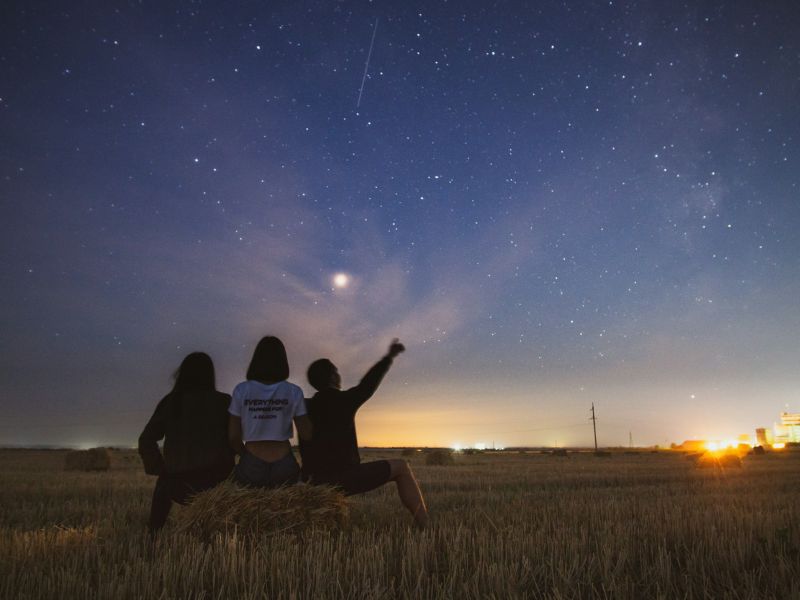Hey, stargazers! October 2024 is packed with amazing stargazing events. Prepare to make notes on your calendars and set alarms. This month, the night sky will be full of wonders. From meteor showers to a solar eclipse, there’s something for everyone. Let’s dive into the list of astronomical events you don’t want to miss!
Annular Solar Eclipse – October 2
Kicking off the month is an annular solar eclipse on October 2. This is when the Moon covers the center of the Sun, leaving a “ring of fire” around the edges. It’s a spectacular sight! This eclipse will be visible from parts of southern Chile and Argentina. If you’re in these areas, make sure to wear special eclipse glasses to protect your eyes.
Camelopardalid Meteor Shower – October 5
Next up is the Camelopardalid meteor shower, peaking on October 5. This shower is named after the constellation Camelopardalis, which looks like a giraffe. Although it’s not the most active meteor shower, you can still see up to 5 meteors per hour. Observing is most enjoyable after midnight. The finest view is found in a dark area away from city lights.
Moon and Venus Conjunction – October 5
On the same night, look for the Moon and Venus close together in the sky. This is called a conjunction. Venus will be shining brightly next to the thin crescent Moon. It’s a stunning sight and a wonderful chance to take pictures. You can see this event just after sunset.
Draconid Meteor Shower – October 8
The Draconid meteor shower peaks on October 8. The dragon-like constellation Draco inspired the name of this shower. The greatest time to observe the Draconids is in the twilight, unlike most other meteor showers. Up to ten meteors per hour may be visible to you. Find a comfy spot and look up!
Comet Tsuchinshan-ATLAS – October 12
Comet Tsuchinshan-ATLAS will be at its brightest on October 12. This comet will be visible in the evening sky. You might need binoculars to see it clearly. Look for a fuzzy, glowing spot with a tail. Comets are rare and exciting to watch, so don’t miss this one!
Moon and Saturn Conjunction – October 14
On October 14, the Moon will be near Saturn in the sky. This is another conjunction. Saturn will be a bright, yellowish point of light next to the Moon. You can see this event with the naked eye, but a telescope will give you a better view of Saturn’s rings.
Full Hunter’s Moon – October 17
October 17 brings the Full Hunter’s Moon. This is the first full moon after the Harvest Moon. It’s called the Hunter’s Moon because it was the time to hunt and prepare for winter. The full moon will rise just after sunset and light up the night sky. It’s a great time for moonlit walks and night photography.
Orionid Meteor Shower – October 21
The Orionid meteor shower peaks on October 21. This shower is named after the constellation Orion, the hunter. Up to 20 meteors might be seen in a single hour. Observing is most enjoyable after midnight. Find a dark spot, lie back, and enjoy the show!
Moon and Jupiter Conjunction – October 21
On the same night as the Orionids, look for the Moon and Jupiter close together in the sky. Jupiter will be a bright, white point of light next to the Moon. This conjunction is easy to see with the naked eye. It’s a perfect way to end a night of stargazing.
Southern Taurid Meteor Shower – October 29
Rounding out the month is the Southern Taurid meteor shower, peaking on October 29. This shower is known for its slow-moving meteors. You might see up to 5 meteors per hour. Observing is most enjoyable after midnight. Look for long, bright streaks across the sky.
Tips for Stargazing
- Find a Dark Spot: City lights can make it hard to see stars. Try to find a place away from streetlights and buildings.
- Check the Weather: Stargazing is best done under clear skies. Check the weather forecast before you go out.
- Bring a Blanket: Lying on the ground is more comfortable with a blanket. It also helps you stay warm.
- Use Binoculars or a Telescope: Some events are easier to see with binoculars or a telescope. They are able to enhance your vision.
- Be Patient: Stargazing takes time. Relax and enjoy the night sky.
October 2024 is full of exciting stargazing events. Whether you’re a seasoned astronomer or a beginner, there’s something for everyone. So grab your calendar, mark these dates, and get ready for a month of celestial wonders. Happy stargazing!




